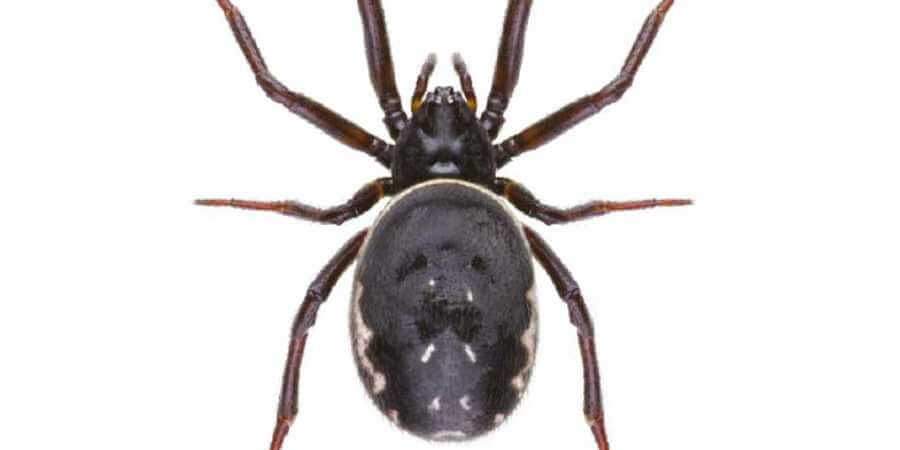
Every autumn, there are reports of false widow spiders becoming uninvited house guests in homes across the UK.
False widow spiders might look similar to the more dangerous black widow spider, but all they're likely to do is give you a small and relatively harmless bite.
They were first recorded in the UK in the 1870s, likely a stowaway on cargo ships from its native Madeira and Canary Islands.
False widow spiders gained a strong population in the majority of the southern counties, and they are now spreading northwards.
What do false widow spiders look like?
False widow spiders are sometimes confused for black widow spiders, but they're relatively harmless. Both spiders have a similar dark-coloured, globular body.
The pattern on their bodies is often described as skull-shaped, which probably doesn't help their negative reputation.
6 species of false widow spiders live in the UK, each with their own distinct colour and size. The 3 most common false widows are:
- The rabbit hutch spider.
- The cupboard spider.
- The noble false widow.
The noble false widow is the most commonly reported and is the largest of the 3 most common false widow spiders. It reaches a body length of 8.5mm-11mm.
Where do false widow spiders live?
False widow spiders can be found in the home all year round, but they're mostly seen when the weather gets colder in autumn.
Their webs look like a tangle of webs and are usually suspended at least 1.5 metres off the ground. This is so they can hunt flying insects. They prefer to skulk in kitchens and conservatories.
Are false widow spiders dangerous to my health?
There are over 650 species of spider known to live in the UK. Only around 12 of these are recorded to have bitten humans.
Although false widows do have a venomous bite, the venom is not potent. Usually, the only symptom is pain in the place you were bitten for 1-12 hours, rarely for more than 24 hours.
Males are more prone to biting, but usually only bite when they feel threatened. If you're bitten by a false widow spider, the symptoms are no worse than the pain of a wasp sting.
How to control or treat spiders
Most spiders, including false widows, can live in relative harmony with us. They can help to keep the house clear of flying insects and other pests.
If you find an unwanted spider in your house, please don't kill it. Either leave it in peace or humanely put it out in your shed.
The most effective way to control spiders is to limit their food source. This should include clearing away dead flies, woodlice, millipedes, centipedes and other crawling insects.
Other tips to remove spiders from your home include:
- Filling in any gaps around doors and windows
- Removing any noticeable cobwebs
- Vacuum cleaning regularly

